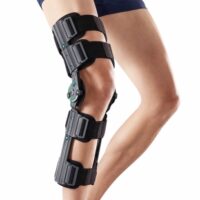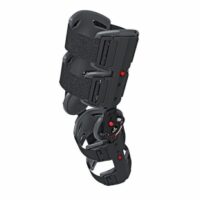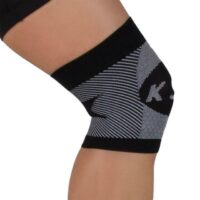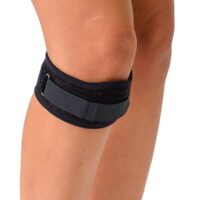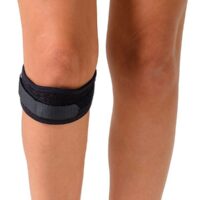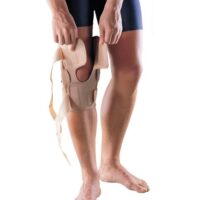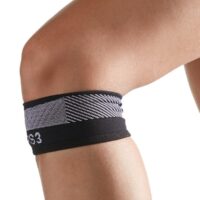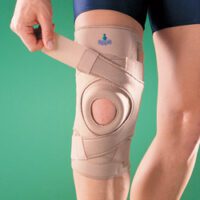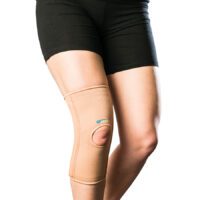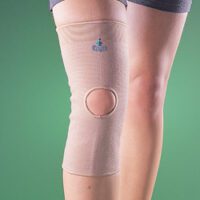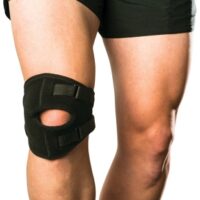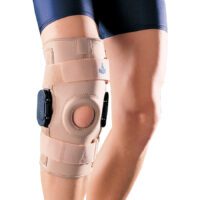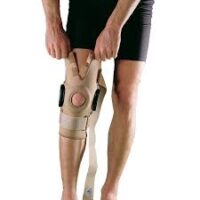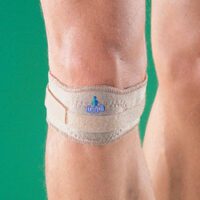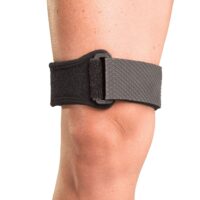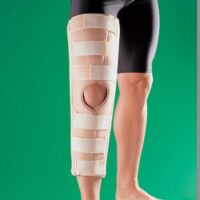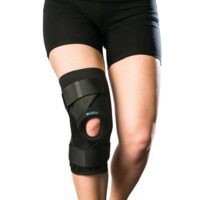Breaststrokers Knee
Article by John Miller

Breaststrokers Knee: Insights from a Physiotherapist
What is Breaststrokers Knee?
Breaststrokers knee, a prevalent injury in the swimming world, is especially common among swimmers who specialise in the breaststroke technique. This condition arises from the distinct and demanding movements required in the breaststroke’s kicking action.
The Unique Demands of the Breaststroke Kick
When performing the breaststroke, swimmers execute a unique combination of leg movements, involving specific patterns of bending, extending, and rotating the knees. This series of actions places unusual stress on the knees, particularly on the medial compartment.
Stress and Strain on the Medial Compartment
The breaststroke kick, characterised by its whip-like motion, requires a swimmer to exert force differently from other swimming strokes. This involves simultaneous outward and backward movement of the legs, propelling the swimmer forward while subjecting the knees to twisting and sideways forces.
The breaststroke kick involves complex movements like abrupt flexing, extending, adducting, and externally rotating the knee against water resistance. This action leads to significant stress on the knee, especially on the medial side.
Vulnerability and Repetitive Stress
The medial compartment of the knee, including structures like the medial collateral ligament and the medial meniscus, is particularly vulnerable to these forces. Repetitive application of these forces during training can lead to the development of breaststrokers knee.
Beyond Pain: Understanding Mechanical Stresses
This condition highlights the mechanical stresses and biomechanical challenges faced by competitive swimmers. It underscores the importance of proper technique, strength, and flexibility in the legs, especially the knees.
Prevention and Treatment
Understanding the mechanics of breaststrokers knee is crucial for prevention and treatment. This requires knowledge of the breaststroke technique and awareness of the body’s responses to this swimming style’s unique demands.
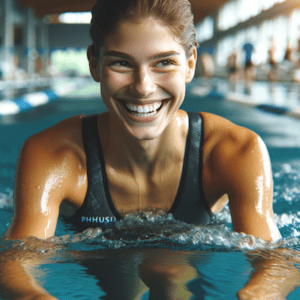
The Role of Swimmers, Coaches, and Healthcare Professionals
This understanding is vital not only for swimmers but also for coaches and healthcare professionals, such as physiotherapists, who work to prevent and manage such injuries. Recognising the signs early and adopting preventive measures can help swimmers continue to enjoy their sport while minimising injury risk.
Identifying Symptoms and Effects
Swimmers with breaststrokers knee often report a range of symptoms, including pain in the medial knee, ligament sprains, irritation of the medial plica, and bursal irritation at muscular insertions.
The Role of Overuse
Overuse is the primary cause of breaststrokers knee. The repetitive nature of the breaststroke kick places continuous stress on the knee, leading to the development of these symptoms.
Effective Treatment Strategies
When it comes to treatment, a comprehensive approach is essential. Treatment typically includes rest, ice, compression, and elevation (RICE), along with specific exercises and technique modification.
Prevention: Key to Longevity in Swimming
Prevention is crucial. Regular check-ups with a physiotherapist, proper warm-up routines, and technique refinement can significantly reduce the risk of developing breaststrokers knee.
Other Knee Issues in Swimmers
Apart from breaststrokers knee, swimmers may face other knee-related issues like anterior knee pain or patellofemoral pain syndrome, often treatable with effective physiotherapy.
The Benefits of Physiotherapy for Breaststrokers Knee
Strengthening and Flexibility
Physiotherapy addresses the root cause of the pain through targeted exercises that enhance knee stability and flexibility.
Technique Modification and Injury Prevention
Physiotherapists provide guidance on technique modification, crucial for reducing stress on the knees in breaststroke swimmers.
Education and Body Mechanics
Physiotherapy sessions offer education on body mechanics and injury prevention, empowering swimmers to understand their bodies better.
Conclusion and Next Steps
In conclusion, breaststrokers knee is a significant concern for breaststroke swimmers. Early recognition of symptoms and consultation with a physiotherapist are crucial for effective treatment and prevention.
What to Do Next?
If you’re experiencing knee pain related to swimming, consult with a physiotherapist for a detailed assessment and personalised treatment plan.
Rochedale - Call 38410277
Book Online: RochedaleSalisbury - Call 32751044
Book Online: SalisburySandgate - Call 32691122
Book Online: SandgateRelated Articles
- Effective Swimmers Shoulder Treatment and Prevention: This article offers a comprehensive guide to understanding, treating, and preventing shoulder pain commonly experienced by swimmers, known as “Swimmers Shoulder”.
- Swimmers Back: Essential Guide To Lower Back Pain: It delves into the causes, symptoms, and management of back pain specifically related to swimming, a condition often referred to as “Swimmer’s Back”.
- Swimming Injuries: Insights And Physio Tips: This article provides an overview of common swimming injuries, covering a range of conditions including shoulder, knee, back, and more. It’s a valuable resource for understanding the broad spectrum of injuries associated with swimming and offers tips for treatment and prevention.
- Knee Ligament Injury – Physiotherapist Guide & Tips – This article covers a broad range of knee ligament injuries, offering valuable information on diagnosis and treatment.
- Effective MCL Sprain Treatment and Prevention Tips: This resource will be valuable for readers seeking a deeper understanding of MCL injuries and their management.
- Management of Popliteus Tendinopathy – Provides understanding on managing tendon issues around the knee, which is crucial for individuals experiencing similar symptoms as Breaststrokers Knee.
- Patellar Tendinopathy – Discusses the condition and treatment of patellar tendon issues, a common concern for athletes and relevant for those seeking comprehensive knee care.
- Pes Anserinus – Offers insights into another knee condition that could be mistaken for Breaststrokers Knee, helping readers distinguish between different knee issues.
- Meniscus Tear – Details about meniscus tears, another common knee injury that could provide additional context or comparisons to Breaststrokers Knee.
- Patellofemoral Pain Syndrome (PFPS) – Explores another type of knee pain, enhancing the reader’s understanding of different knee conditions.





